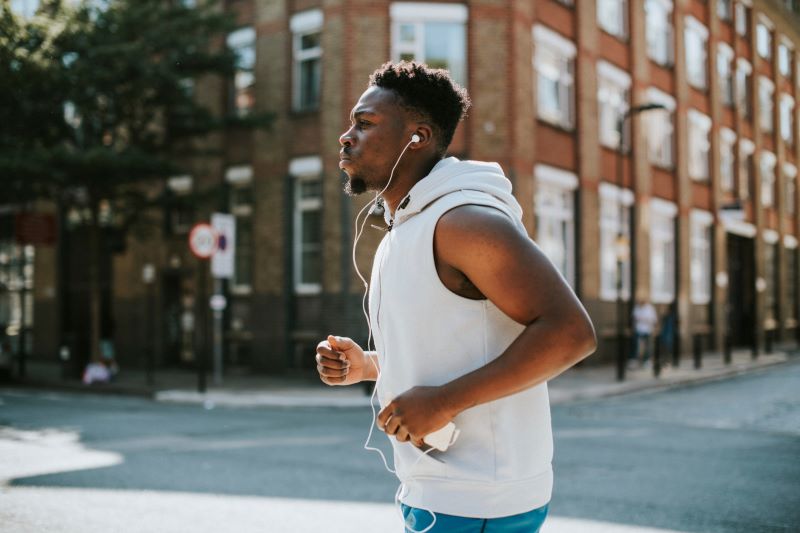How Did STI Rates Change During the First Year of the COVID-19 Pandemic?

Sexually transmitted infections (STIs) are a global health issue. Recently, the Centers for Disease Control and Prevention (CDC) shared data on how STI rates changed during the first year of the COVID-19 pandemic.
Initially, during the first few months of the COVID-19 pandemic in 2020, STI rates decreased. At that time, lockdown measures and social distancing requirements were put in place by governments around the world. These measures almost certainly had an impact on people’s sexual behaviors by restricting opportunities to meet new sexual partners, keeping some couples apart who did not live together, and encouraging people to limit the number of contacts in their “quarantine bubble,” possibly further affecting their number of sexual partners.
In addition to changes in sexual behavior decreasing STI rates in March and April of 2020, reduced STI screening may have contributed to the lower STI rates. Since many health centers and hospitals were overburdened by COVID-19 cases, resources were shifted away from other illnesses and health concerns and toward COVID-19 activities. In some cases, clinics could only accept patients who were exhibiting symptoms. Because many STIs do not have symptoms, some STIs may have gone undiagnosed.
What’s more, the beginning of the pandemic brought increased unemployment and with it, increased barriers to care such as lack of insurance and/or funds for wellness check-ups. This could mean that less people were doing recommended routine STI tests, so the number of cases went down.
Despite the dip in STIs during the initial lockdown period, STI rates subsequently rebounded during the second half of 2020, exceeding 2019 STI rates in many cases. For example, there was a 10% increase in reported gonorrhea cases in the U.S. from 2019 to 2020, as well as a 7% increase in primary and secondary syphilis cases. Syphilis cases in babies (which occur when a mother passes syphilis to her baby during pregnancy) increased by 15% from 2019 to 2020, and by 235% from 2016 to 2020. On the contrary, reported cases of chlamydia declined 13% from 2019 to 2020, but this could have been due to reduced STI screening and not an actual drop in chlamydia numbers.
There are several possible explanations for the increased rates of most STIs during the first year of the COVID-19 pandemic. Perhaps most importantly, COVID-19 put an enormous stress on the world’s health care systems and caused many resources to be diverted away from other public health initiatives to go toward the pandemic. This means that efforts/campaigns to prevent the spread of STIs may have received less funding and attention in 2020, just like those of many other health causes.
The pandemic also introduced many previously unknown elements into STI tracking, (e.g., the temporary decline in STI testing due to quarantine measures and medical supply shortages,) which likely confounded the results. Therefore, CDC experts caution individuals to interpret the numbers with this in mind.
Nevertheless, STIs remain an important health issue. They can be spread to more individuals and cause more serious health problems if they are left untreated. As such, communities can benefit from STI prevention efforts such as comprehensive sexual education, training for health care professionals, and appropriate screening options.
Resources:
Centers for Disease Control and Prevention (CDC). (2022, 12 April). Impact of COVID-19 on STDs. https://www.cdc.gov/std/statistics/2020/impact.htm
Centers for Disease Control and Prevention (CDC). (2022, 12 April). New data suggest STDs continued to increase during first year of the COVID-19 pandemic. https://www.cdc.gov/media/releases/2022/p0412-STD-Increase.html
You may also be interested in...
Other Popular Articles

What Is the Average Penis Size?
If you have ever wondered how your penis compares to others in terms of size, you are not alone. Many men are curious to know how their penises stack up compared to the average. Unfortunately, general curiosity can sometimes give way to full-on obsession and anxiety about penis size. This can be an unhealthy and often unnecessary fixation, especially because most men who think their penises are too small have perfectly normal-sized penises.

What Is Jelqing, and Does It Actually Work?
The term “jelqing” refers to a set of penis stretching exercises that some believe can make the penis bigger. Although the practice has gained attention and popularity in blogs and internet forums in recent years, there is no scientific evidence that it is an effective way to permanently increase the size of one’s penis. In fact, in some cases, jelqing may actually cause damage to the penis, so it is a good idea to get all the facts before setting off to try it.

What Is Sensate Focus and How Does It Work?
Sensate focus is a technique used to improve intimacy and communication between partners around sex, reduce sexual performance anxiety, and shift away from ingrained, goal-oriented sexual patterns that may not be serving a couple.

Can Sex Reduce Menstrual Cramps?
The SMSNA periodically receives and publishes ‘guest editorials.’ The current article was submitted by Mia Barnes, a freelance writer and researcher who specializes in women's health, wellness, and healthy living. She is the Founder and Editor-in-Chief of Body+Mind Magazine.
Having sex while you experience menstrual cramps is healthy and can provide significant benefits. While it might not be the first activity that comes to mind when your PMS or period cramping begins, many people enjoy sex to reduce menstrual cramps, experience increased pleasure and benefit from other advantages. Learn more about having sex while menstrual cramps are happening and how it can help your body.

How Long Does It Take the Average Man to Ejaculate?
On average, it takes a man between 5 to 7 minutes to orgasm and ejaculate during sexual intercourse.

The Effect of Regular Aerobic Exercise on Erectile Function
Erectile dysfunction (ED) is the inability to achieve or maintain an erection sufficient for satisfactory sexual activity. As men get older, their erectile functioning may naturally decline due to changes in testosterone levels, cardiovascular functioning, and the potential development of other chronic medical conditions that become more common with age.
You are prohibited from using or uploading content you accessed through this website into external applications, bots, software, or websites, including those using artificial intelligence technologies and infrastructure, including deep learning, machine learning and large language models and generative AI.

